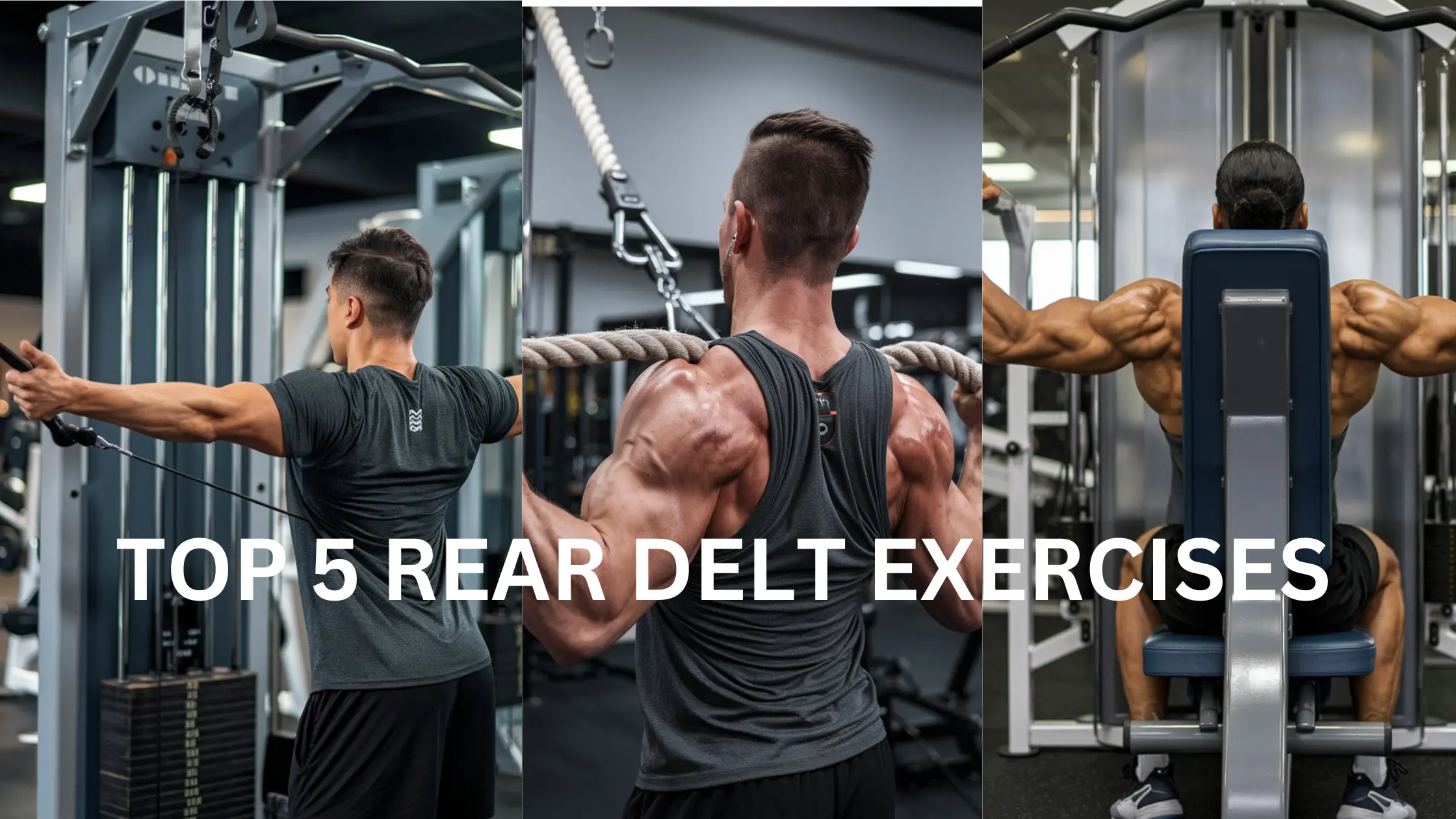5 Rear Delt Exercises for Stronger Shoulders and Better Posture
When it comes to building a well-rounded physique, many people overlook the importance of the rear deltoids. These small but essential muscles are crucial for maintaining shoulder stability, improving posture, and enhancing overall upper-body strength. Neglecting the rear delts can lead to muscle imbalances, which may contribute to shoulder injuries and poor posture over time.
In this comprehensive guide, we will walk you through five of the best rear delt exercises to ensure you are targeting these vital muscles effectively. Whether you’re an experienced gym-goer or a beginner looking to enhance your shoulder development, these exercises will provide the foundation for stronger and healthier shoulders.
Why Train Your Rear Delts?
Before diving into the exercises, it’s important to understand why training the rear delts is essential for anyone looking to build a strong and balanced physique. The rear deltoids are located at the back of the shoulder and play a significant role in movements such as pulling, pressing, and lifting. Additionally, they help counterbalance the work of the front and side deltoids, promoting symmetry and improving the aesthetics of the shoulders.
By strengthening the rear delts, you can enhance your shoulder mobility, reduce the risk of injury, and improve overall posture. This is especially important for those who spend long hours sitting at desks, as this can lead to a hunched posture and weakened upper back muscles.
Now, let’s get into the top five rear delt exercises that will help you achieve balanced and powerful shoulders.
1. Bent-Over Dumbbell Reverse Fly
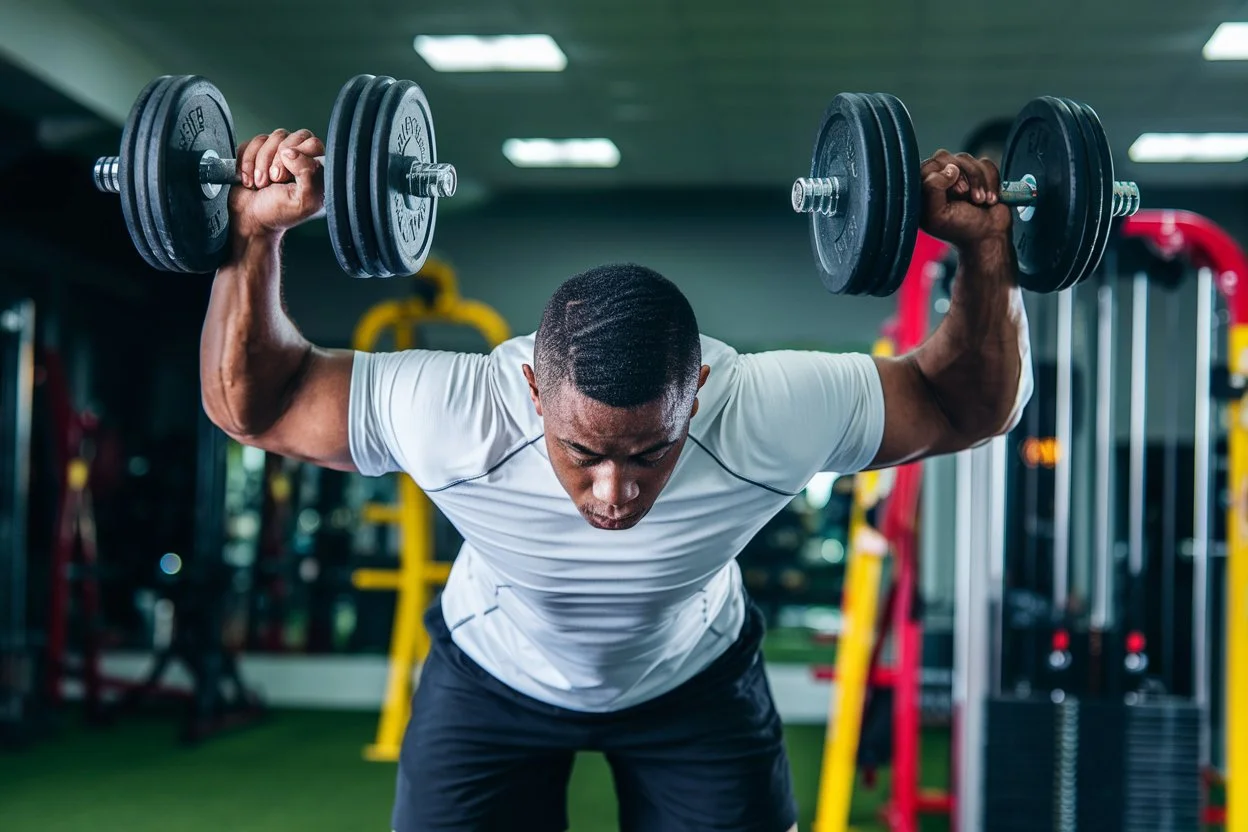
The Bent-Over Dumbbell Reverse Fly is one of the most effective exercises for isolating the rear delts. This move targets the upper back and shoulder muscles, helping to correct posture and strengthen the posterior chain.
How to Perform:
- Position your feet hip-width apart and grip a dumbbell in each hand.
- Bend at the hips until your torso is almost parallel to the floor, keeping a slight bend in your knees.
- Let the dumbbells hang naturally from your shoulders, with your palms facing inward towards each other.
- Keeping your arms slightly bent, raise the dumbbells out to the side in an arc, squeezing your shoulder blades together at the top.
- Gradually bring the dumbbells back down to the starting position.
Pro Tips:
- Keep your back flat throughout the movement to avoid strain on your lower back.
- Focus on slow and controlled reps, feeling the contraction in your rear Delts.
Muscles Worked:
2. Face Pull
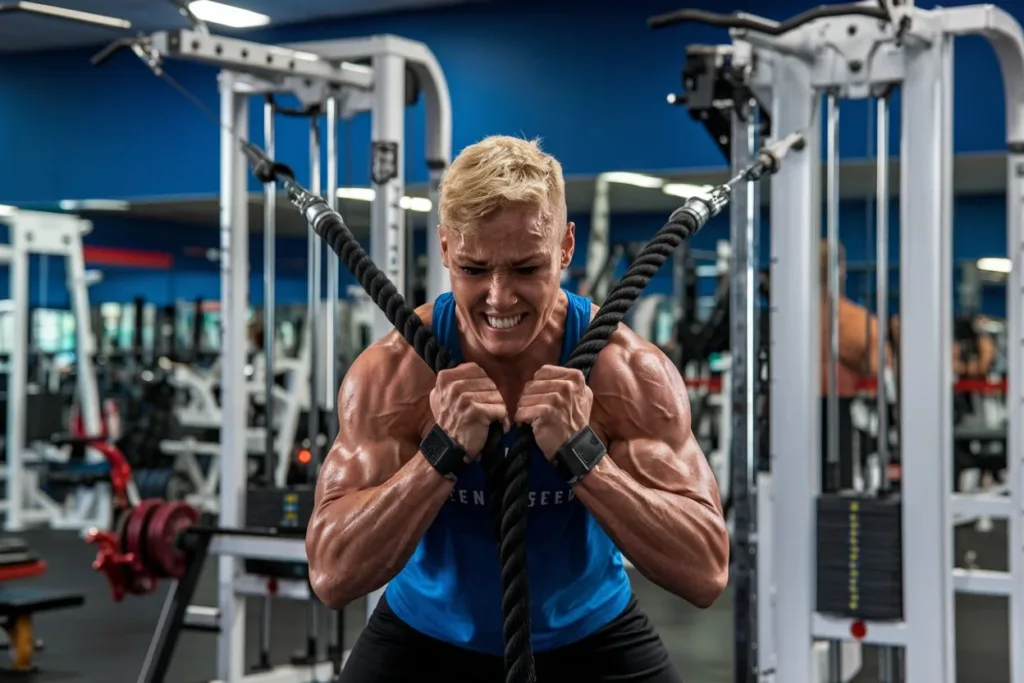
The Face Pull is an excellent exercise for both rear delt development and improving shoulder health. It targets not only the rear delts but also the upper back and rotator cuff muscles, making it a great all-around shoulder stabilizer.
How to Perform:
- Attach a rope handle to a cable machine set at about chest height.
- Grab the rope with both hands, palms facing down, and take a few steps back to create tension on the cable.
- Stand with your feet shoulder-width apart, and pull the rope towards your face, driving your elbows high and wide.
- As you pull, externally rotate your shoulders so that your thumbs point backward at the end of the movement.
- Slowly return to the starting position.
Pro Tips:
- Keep your elbows above your shoulders throughout the movement to fully engage the rear delts.
- Perform this exercise with a light to moderate weight to ensure proper form.
Muscles Worked:
3. Seated Cable Row with Wide Grip
Although the Seated Cable Row is primarily a back exercise, using a wide grip can shift the focus onto the rear delts. This variation emphasizes the posterior deltoids while also engaging the upper back muscles for improved posture and pulling strength.
How to Perform:
- Sit on the cable row machine and grab the bar with a wide, overhand grip.
- Sit up tall, keeping your chest raised and shoulders pulled back.
- Pull the bar towards your chest, flaring your elbows out to the sides to engage your rear delts.
- At the end of the movement, press your shoulder blades together before gradually returning to the starting position.
Pro Tips:
- Keep your back straight throughout the movement to avoid any strain.
- Focus on the mind-muscle connection with your rear delts by flaring your elbows wide.
Muscles Worked:
4. Rear Delt Machine Fly
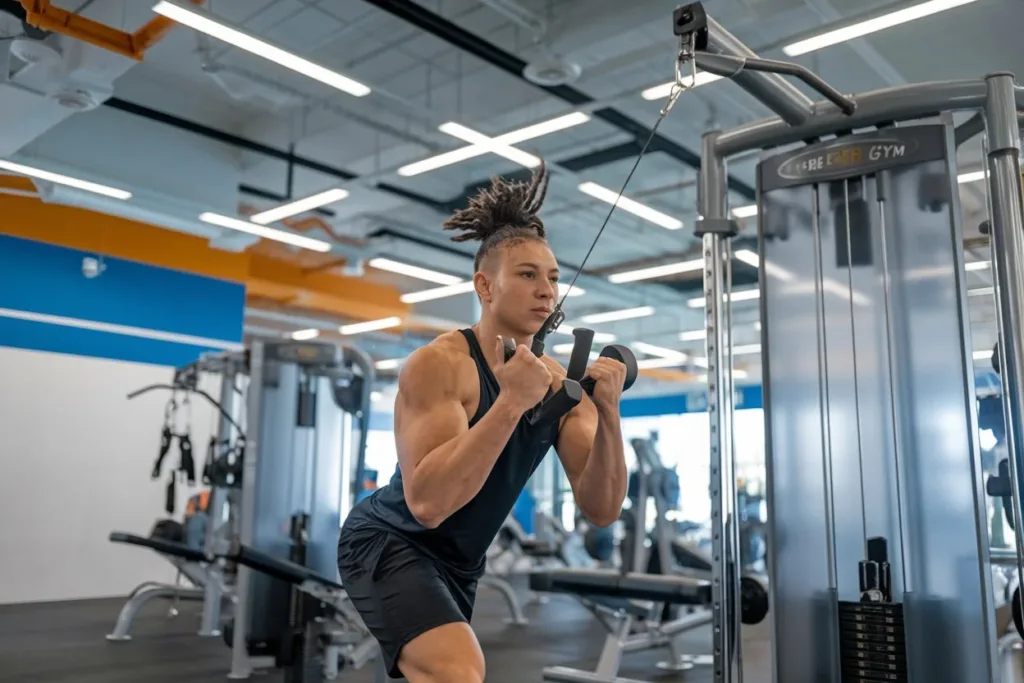
The Rear Delt Machine Fly is a convenient exercise that isolates the rear delts while reducing the risk of poor form. It’s ideal for those looking to focus solely on their rear delts without involving other muscle groups.
How to Perform:
- Sit on the rear delt machine with your chest against the pad and grab the handles with a neutral grip.
- Keep your arms slightly bent and pull the handles back in a wide arc until your arms are extended in line with your shoulders.
- Squeeze your shoulder blades together at the top of the movement.
- Slowly return to the starting position.
Pro Tips:
- Adjust the seat height so that the handles are in line with your shoulders.
- Control the weight throughout the entire range of motion, focusing on the rear delts.
Muscles Worked:
5. Standing Resistance Band Pull-Aparts
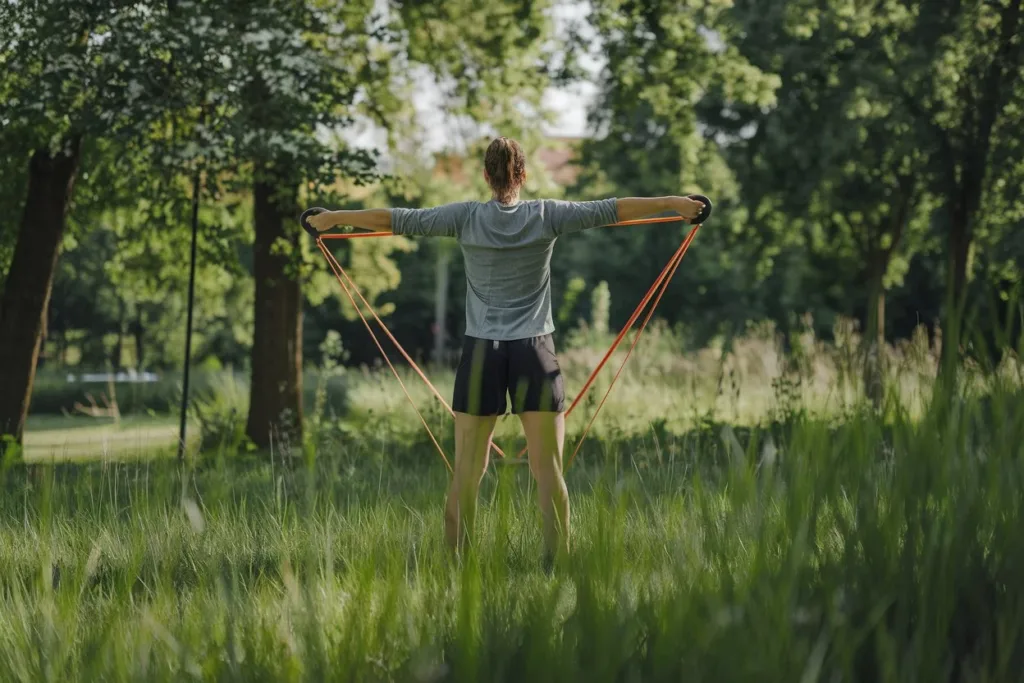
Resistance band exercises like the Standing Band Pull-Apart are great for adding variety to your workout routine. This exercise not only targets the rear delts but also helps improve shoulder mobility and posture, making it ideal for warm-ups or finishing exercises.
How to Perform:
- Stand with your feet shoulder-width apart and hold a resistance band with both hands at shoulder height.
- With your arms fully extended in front of you, pull the band apart until your hands are in line with your shoulders.
- At the end of the movement, tighten your shoulder blades together, then gently go back to the starting position.
Pro Tips:
- Maintain a strong core and refrain from arching your back.
- Choose a resistance band with enough tension to challenge your rear delts but not compromise your form.
Muscles Worked:
Conclusion
Incorporating these five exercises into your workout routine will ensure that your rear delts receive the attention they deserve. Strong and well-developed rear delts not only contribute to a balanced and aesthetic upper body but also improve shoulder health and posture.
Remember to focus on proper form, controlled movements, and a consistent training routine to see the best results.
get more knowledge from GOOGLE

